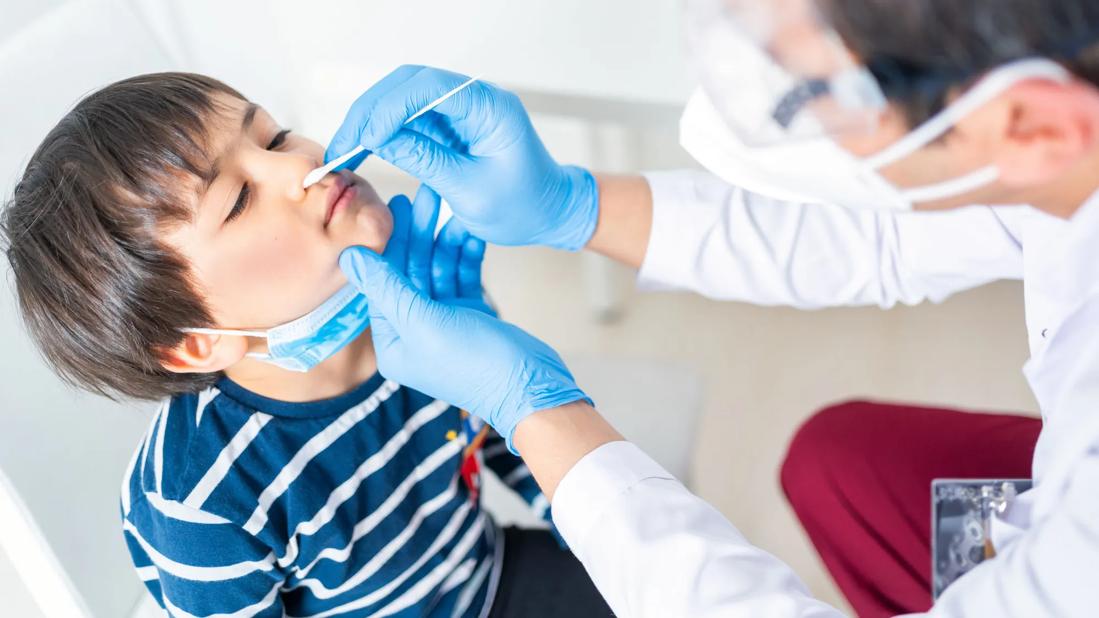Managing care and counseling your patients

Though severe illness is uncommon, new COVID-19 cases among children remain exceptionally high, according to the American Academy of Pediatrics (as of September 23).
Advertisement
Cleveland Clinic is a non-profit academic medical center. Advertising on our site helps support our mission. We do not endorse non-Cleveland Clinic products or services. Policy
Consult QD recently spoke with Camille Sabella, MD, Director of the Center for Pediatric Infectious Diseases at Cleveland Clinic Children’s, about the delta variant, RSV and managing care for both.
Dr. Sabella: We’re certainly seeing sicker children and more hospitalizations with the delta variant, but it’s unclear if this is because of greater transmission in younger kids, or if the strain is leading to greater disease severity in children.
It’s likely that because the transmission rate is higher in the delta variant than in previous strains – it may just be a numbers game. But the data are still inconclusive at this point.
Dr. Sabella: In my experience, yes. Most children will not have significant symptoms at all. If they do, it will likely be mild respiratory symptoms, like a cough and some congestion. In a very small proportion of children, these symptoms may get progressively worse, advancing to acute respiratory distress syndrome, which would require hospitalization and possibly critical care intervention, such as oxygen support or ventilation.
The vast majority of pediatric patients with COVID-19 do not require hospitalization. Clinically, we’ve noted two risk factors for severe disease: higher BMI and asthma.
Dr. Sabella: Manifestations of MIS-C may include a high fever for several days, rashes, red eyes, enflamed mucus membranes and conjunctival involvement. There may be other organ involvement as well, such as liver inflammation and gastrointestinal symptoms. Low lymphocyte counts and low platelet counts can be clues to diagnosis. The greatest risk of this condition appears to be inflammation of the heart muscle and development of coronary artery aneurysms.
Advertisement
In terms of management, supportive treatment is critical. Depending on the symptoms and findings, we’ve used intravenous immunoglobulin, corticosteroids and biologic treatments to immunomodulate patients’ immune responses.
MIS-C tends to follow about four to six weeks following a COVID-19 surge.
We are not seeing MIS-C as frequently as we were last summer and winter; however, that could mean we just haven’t gotten to the peak yet this season. Again, this is anecdotal, and may be better understood once we have longer-term data about this variant.
Because of the timing — several weeks after the acute infection — this appears to be an immunologic response to the virus, but the precise mechanism is not yet understood.
Dr. Sabella: RSV is a very common virus that generally affects children before age two years. Historically, RSV outbreaks occur between November and March; this year we saw it right in the middle of the summer. Some experts theorize that last year we didn’t see a surge in RSV, or influenza for that matter, because of all the preventive COVID-19 strategies in place.
I’m not sure if that explains the whole story. The degree to which it came back this summer may speak to dynamics between COVID-19 and RSV that just aren’t clear at this point.
Anecdotally, symptoms related to RSV seem to be more severe than what has been historically noted. As discussed with the delta variant, it could be that more kids in the community were getting infected with RSV at the same time, and the higher rates of hospitalization are a manifestation of that. The fact that the virus has not been endemic for the past year also likely plays a role in the more severe symptoms we are seeing.
Advertisement
Dr. Sabella: There is still so much we don’t know about the virus, but there are significant data showing that the vaccine is safe and effective against preventing severe disease, hospitalization and death.
To pediatricians, follow the same advice like we do for every vaccine; follow the recommendations of the American Academy of Pediatrics and the Advisory Council for Immunization Practices.
Advertisement
Advertisement

Integrated care model reduces length of stay, improves outpatient pain management

A closer look at the impact on procedures and patient outcomes

Experts advise thorough assessment of right ventricle and reinforcement of tricuspid valve

Study also finds that 26% of children with cancer have mutations in DNA repair genes

A closer look at current uses and future opportunities

Experts are challenging the one-size-fits-all paradigm

Quality improvement project addresses unplanned extubation

Cardiac imaging substudy is the latest paper originating from the VANISH trial